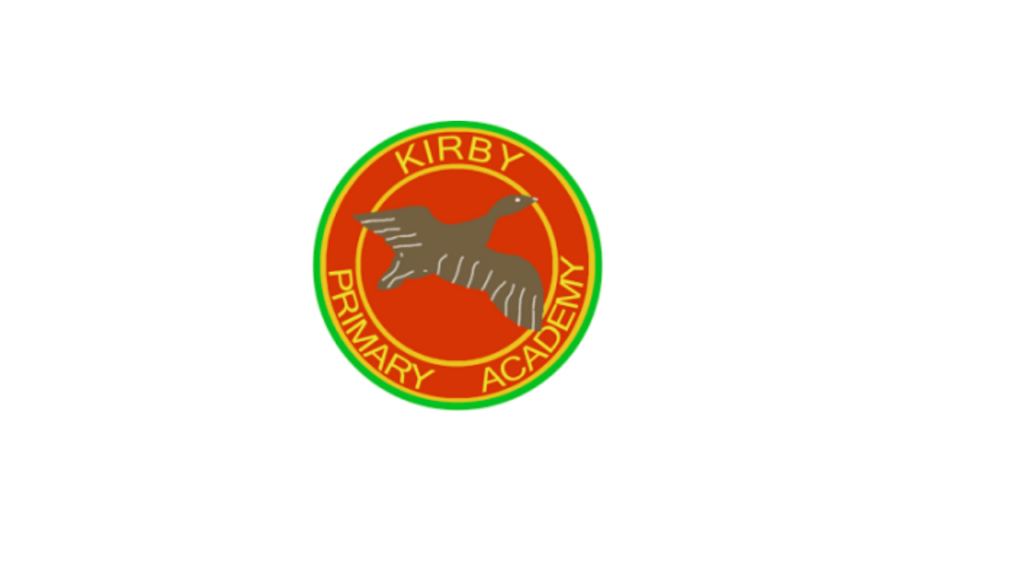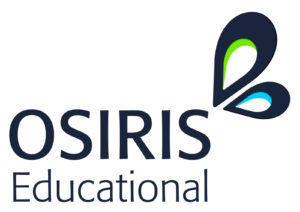CASE STUDY
Kirby Primary Academy – VL

The issue
When we started on our Visible Learning journey, we decided very quickly to introduce new learning dispositions to the school. The school used
routines such as ‘my turn, our turn, your turn’ and the ‘4Bs before me’ but these were not embedded or fully understood by the school and therefore
learning dispositions were a more appropriate area to develop. We had a range of questions that we asked ourselves as leaders:
• What do we want to keep that is already working at KPA?
• Who determines the learning dispositions?
• How do we make every child understand the meaning of each learning disposition?
Analysis of the issue
There was a clear lack of identity for the school when we began Visible Learning.
We conducted pupil voice research to explore the children’s understanding of learning and how to learn. This was supported by our initial Visible Learning meetings, including the completion of the matrix and our School Capability Assessment.
Evidence gathering and professional research included:
• Attending ‘Evidence into Action’ day one and two
• Assessment Capability Study
• Foundation Day
• Building and Developing Visible Learners
• Impact Coach day one
• Pupil perception linked to ‘what makes a good teacher’, ‘what makes a good learner’
Although the most recent Ofsted at the time (September 2016) highlighted a developing attitude to learning for our pupils, this was not embedded. It also did not focus on how children learn and how to improve:
“Pupils are developing better attitudes to school and to learning. School staff place an appropriate emphasis on encouraging good learning behaviours. For example, during the inspection the headteacher used an assembly to teach pupils not to be afraid of getting things wrong and to understand that we learn through mistakes. This message was later seen being reinforced during lessons by class teachers.” Ofsted September 2016
Development of the plan
The school created a three-year School Development Plan SDP with Visible Learning embedded throughout. It was important to be very clear about the school vision and how this would be underpinned by Visible Learning.
Key actions to address included:
• The need to create a school identify through the development of learning disposition characters.
• To ask parents, pupils, staff and governors for their views on the priorities of learning in the school.
• To develop pedagogical understanding for staff around how children learn most effectively.
• To create ‘impact cycles’ linked to the development of learning in every class.
• To develop an ‘Impact Coach’ and specialist in Visible Learning.
As a school, it was essential that all stakeholders were involved in addressing the issue. A ‘Communications Plan’ was developed to help ensure that a strategic approach was adopted to deliver all key aims.
The first phase was the identification of need, developing a Visible Learning identity and creating a different approach to how learning was viewed in the school. The key actions of the plan were:
• To develop learning dispositions relevant to the school and its needs.
• To embed the learning dispositions in school.
• Undertake training and research that would inform decision making, led by the Impact Coach.
• Ensure a consistent approach when staff mobility impacts upon school.
• Develop a ‘How we Learn’ booklet and approach for the school.
• To establish a ‘Guiding Coalition’ to ensure the continued development of Visible Learning throughout the school.
• To develop a coaching culture within the school to improve teaching and learning.
Implementation of the plan
After the initial identification,
the Impact Coach undertook a range of research to develop a deeper understanding of learning dispositions.
This included using our Visible Learning training, seeking advice from Visible Learning practitioners and studying the approach of other schools. This information was then shared with our schools within our Trust to guarantee greater impact.
We then requested that staff and governors discuss what learning dispositions would be most appropriate and we also asked children to think of a range of dispositions too. A shortlist was then created with the SLT deciding on the final five. The reason the SLT made the final decision was to ensure a breadth of dispositions that would be most appropriate to the school at that current time were chosen.
A competition was launched to all children to create five characters to link to each disposition. Children were able to name their character and create an illustration to represent the disposition, based on jungle characters. The Visible Learning Impact Coach then selected the final characters from all the entries.
Stories for each animal were written so that each character could be introduced to the children in a fun and engaging way. These were then shared in whole school assemblies and since then each character and related stories have grown.
Our Visible Learning journey for the academic year 2017-18 was launched with an Art of Learning Week. This whole-school off-curriculum extravaganza secured pupils’, colleagues’ and parents’ understanding of Visible Learning and refocused all on our Learning Dispositions. Each class had a range of individual, pair, group and whole-class challenges intended to build: Perseverance, Curiosity, Resourcefulness, Collaboration and Pride. Defined outcomes of the week included the creation of a class canvas demonstrating their understanding of the ‘Art of Learning’ and Kirby’s stakeholders are integral to our Visible Learning journey. We have delivered parent workshops on Visible Learning and our
VL Guiding Coalition includes parent, governor and teaching representatives.
Our newsletter has weekly features on VL, including phrases for parents to use when discussing the learning that children have been involved in. Families are invited in to celebrate our Visible Learners who are nominated for certificates, each Friday. The certificates relate to our learning dispositions and this helps everyone to verbalise how children have demonstrated either curiosity, perseverance, resourcefulness, collaboration or pride. Images of the awarded children demonstrating the dispositions are shared in assembly and are added to our VL corridor displays- further consolidating the importance of these to becoming successful and lifelong learners.
We have had crocheted versions of our learning disposition characters made, to enhance the accessibility of these. The characters are used creatively and consistently across the school.
There is an ambassador for each Learning Disposition. The ambassadors created the original images for the characters. These ambassadors help identify their disposition in use across the school and are responsible for awarding visible learners weekly, this has now extended to staff and parents as the children can nominate an adult for demonstrating one of the learning dispositions by speaking with the ambassador and sharing the evidence that leads to the adult getting a certificate in assembly with the other Visible Learners! We are keen to promote that learning is lifelong and that all adults are learners too. We have transformed a disused intervention room into a professional learning space for colleagues and children perceive this as the classroom for teachers.
One of our greatest assets to Visible Learning is through our guinea pig, Ollie. Each week, Ollie makes his observations in our newsletter, according to what he has heard in his discussions with children and visits to classrooms. He shares the language of learning and he articulates the approaches to learning used across the school.
Visible Learning is at the heart of absolutely everything we do and we can measure the school’s journey using this vehicle. Even our Macmillan Bake Off had a Visible Learning focus!
Once our dispositions were embedded throughout the school, we developed our own learning pit linked to our dispositions. This was designed by some of our Visible Learner ambassadors based on their learning at one of our regional ‘Visible Learning KidsMeet’ workshops. Our children are able to articulate what it means to be in the learning pit and how they can use the school dispositions to successfully move out of it. They fully understand that it is a good thing to be in the learning pit and can give examples and internalise the meaning for themselves.
At a further KidsMeet, our children developed our ‘Challenge Mountain’ that they coined ‘The Kirby Way’. They viewed this as a way of encouraging children to take a high challenge/high risk route as this leads to higher rewards compared to a low risk/challenge path which will not enable the best learning opportunities. This has been introduced to children and we plan to develop this further in the next academic year.
Evaluation
The impact of Visible Learning has been profound on our school.
We now have a clear identity and our children are able to articulate learning in much clearer ways. Children in Early Years are able to name each character and the associated disposition. As children progress through the school their explanation of what the dispositions mean and they are able to internalise this more effectively. This is supported by pupil voice, discussions with children in lesson observations and weekly assemblies.
Children embrace challenge much more easily
as they have the skills and language to explain how they can tackle each problem. All children can explain talk about a time they were in the ‘learning pit’. More advanced understanding from some children means they can articulate how they can develop and move out of the learning pit. The evidence from our teaching and learning monitoring supports a change in attitudes and perceptions to learning. The Senior Leaders of the school have acknowledged that teachers have changed the approaches they use to ensure optimum learning for our children. Our Academy Trust has also quality assured teaching in the school and identified the impact our dispositions have had. An independent ‘Teaching and Learning Review’ on the 17th and 18th October 2018 also commented on the impact of Visible Learning; “The school’s focus on ‘Visible Learning’ is helping pupils learn to take responsibility for their own learning and to develop positive attitudes to learning. Pupils are familiar with the school’s learning disposition characters.”
Pupil voice has been integral to our success and we have empowered children to take a lead in how they learn. We have ‘Visible Learning Ambassadors’, this is both for each disposition and as learning ambassadors that attend KidsMeet sessions, deliver assemblies to the rest of the school and meet with governors. We also have a ‘Junior Leadership Team’ that play an essential part in our development of Visible Learning and allow pupil voice to be shared with Senior Leaders on a regular basis (included in our evidence our two case studies supporting these roles). Before two of our ambassadors moved to secondary school, they judged applications from children applying to take their roles and made the final appointments. Their reasoning around learning and who could continue their legacy was a clear sign of how much Visible Learning had developed their understanding of how to learn.
We strongly believe that Visible Learning also played an important role in our end of Key Stage National tests this academic year.
We had an increase of 43% in maths in KS1 and achieved 67% combined in KS2, which was above national for the first time since academisation.
These results are an indication of the shift in focus and mindset of children in the ways they approach learning and how staff approach teaching.
Collective efficacy has been a consistent ethos
in the development of the school. Our staff have developed their own skills in how children learn and how we can develop as a school. Our school Self-Evaluation Summary and Development Plan are underpinned by the Visible Learning approach and we have created a Guiding Coalition made up of the Impact Coach, the Chair of Governors and a parent to develop this further. Parental voice has been important to our development and we have held workshops to ensure that parents have an understanding of what Visible Learning is and how the school plan to use it to improve even further (attached is evidence of the results of the parent workshop and some parent feedback on Visible Learning).
Where to next?
Kirby Primary Academy is a Visible Learning school. It is our collective belief that our Visible Learning strategy will lead every child and adult to success in school and beyond. We dedicate time to learning about learning and our increased self-awareness helps us select learning opportunities and challenges. We plan to develop our coaching skills, including our own rationale for coaching. We want to be able to share good practice and improve the educational experiences and outcomes of children in more than one school as our long term aim.
We have a range of aims for the next part of our
Visible Learning journey, including:
Developing assessment capable learners
This is our main aim for the next academic year. We are using SOLO taxonomy as one way of doing this and plan to develop a range of self and
peer assessment strategies to ensure children understand where they are, what they need to improve and how to achieve it.
Learning Rubrics
We have created rubrics for each learning disposition and now plan to ensure children understand what these mean and how they can develop their own understanding further. This will help support our developing language of learning scale and lead to rubrics for all forms of learning.
This may lead to us introducing a new learning disposition if stakeholders feel this would support our learning strategies.
Research
We are already undertaking research into ‘Impact Teams’ (Paul Bloomburg/Barb Pitchford) and plan to develop research driven, evidence-based, analytical reflections for teachers to develop our learners.
Developing Mindframes
We use the teacher and student mindframes regularly and plan to work on creating parent mindframes so they can further their understanding of Visible Learning principles.
We also plan to develop leadership mindframes to support our new middle leaders. The ’10 Mindframes for Visible earning’ by John Hattie will support this development.

